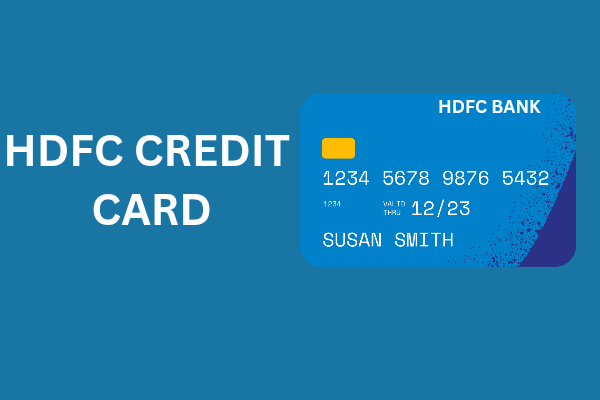All the information you need to choose the best policy for your needs is in one place: what is Max Life Insurance, how it operates, the different types of plans that are available, how to choose the premium, tax benefits, claim settlement ratio, and more.

Maximum Life Insurance: A Comprehensive Guide to Your Family’s Financial Security
Life insurance is now the most crucial safeguard for the family’s safety and is more than just a financial product. It becomes crucial to comprehend the strategies of a reputable firm like Max Life Insurance with a solid claim settlement record if you want to safeguard your family’s future. In a straightforward and useful manner, this article will cover every aspect of Max Life Insurance’s various plans, including their advantages, tax advantages, premium calculation techniques, the claim procedure, and the formula for selecting the best policy. Our goal is for you to be able to properly grasp “Why and how to take it” in addition to receiving the answer to the question “Which policy to take” after reading this article.
Why max life insurance?
The first considerations you have when selecting a life insurance provider are the company’s dependability, claim settlement ratio, plan flexibility, and suitability for your evolving demands. Max Life Insurance seems to be strong based on each of these factors. As financial planning and awareness have grown in India, consumers are now considering the company’s service quality, claim support, riders (such critical illness and accidental death benefit), and long-term value in addition to the low cost when purchasing insurance. This explains why there is a steady rise in demand for companies like Max Life Insurance.
Furthermore, a number of Max Life Insurance plans include explicit information on the benefits you will receive in certain situations, the amount assured, and the return on maturity. The customer’s trust is increased by this open structure.
Top plans of Max Life Insurance
Term plans, money-back plans, ULIPs, endowments, kid plans, and retirement/annuity plans are among the options available under Max Life Insurance. Let’s examine their function and usage in plain English
1. Term Insurance plan
This is thought to be the most practical and cost-effective plan. There is a modest premium for a high sum promised. A term plan from Max Life Insurance may be a good choice if you wish to ensure your family’s financial stability and that their needs will be satisfied even after your passing. Certain term plans also provide the Return of Premium (ROP) option, which returns your premium if you stay healthy for the duration of the insurance.
2. Unit Linked Insurance Plan
Max Life Insurance’s ULIP plans may be helpful to you if your goal is to obtain both insurance and market-linked investment returns. This involves investing a portion of your premium in debt or equity funds and another portion in insurance coverage. Long-term objectives like retirement or children’s further education are seen to benefit from this.
3. Savings and Endowment Plans
Those who desire secure and predictable returns may consider these options. Here, you receive savings (maturity benefit) in addition to life insurance protection. The endowment plans offered by Max Life Insurance are appropriate if you are risk averse and wish to build wealth with assurance.
4. Plans for Moneyback
The Moneyback Plan is appropriate if you wish to continue receiving a certain amount during the insurance term and receive a maturity benefit at the conclusion. For people who prefer consistent cash flow, this plan is an excellent fit.
5. Annuity/Retirement Plan
The best way to guarantee a steady pension-like income after retirement is to purchase an annuity plan from Max Life Insurance. It guarantees you a steady income, allowing you to maintain financial stability throughout retirement.
6. Plan for Children
A child plan is helpful for building up funds ahead of time for future costs for children, such as marriage, further education, or study abroad. In this case, some plans offer the Premium Waiver Benefit (PWB) in addition to the insured (parents); in the event that the parents pass away, the child will still get the funds for the specified purpose.
How the premium is decided
Your age, sum assured, policy term, smoking or non-smoking status, medical history, occupation, and riders selected all affect your Max Life Insurance premium. Generally speaking, your premium will be lower the younger you are when you purchase the coverage. Likewise, the premium for a non-smoker is typically lower than that of a smoker. The premium will also go up if your sum promised is huge, say Rs 1 crore or more, however this investment is very worthwhile for safeguarding your family. Therefore, having coverage that is at least 10–15 times your yearly salary is always preferable.
Tax Benifits
Up to the specified maximum, the premiums paid for Max Life Insurance may qualify for a tax deduction under Section 80C of the Income Tax Act. Furthermore, the maturity amount may be tax-free under Section 10(10D) provided the policy’s requirements are fulfilled. Keep in mind that tax laws can change periodically, so before making an investment, check the most recent tax laws or speak with your tax expert.
Claim settlement Ratio
A crucial indicator of any life insurance company’s reliability is its claim settlement ratio (CSR). It indicates the proportion of claims that the business resolves. Max Life Insurance’s CSR has long been regarded as high, a sign that the business takes claims seriously and is customer-friendly. To ensure that the decision is based on up-to-date information, do check the IRDAI annual report or the company’s official website once for the most recent CSR statistics for the year you are taking out the insurance.
Claim process
The claim procedure should be as clear and easy as possible. The nominee must submit the necessary paperwork, including policy documentation, a death certificate, KYC, and any relevant medical data, as part of Max Life Insurance’s typically digitally friendly, step-by-step claim process. The business then promptly handles the claim. You can expedite the process by adding the appropriate nominee to your policy beforehand, maintaining up-to-date KYC, and storing all required paperwork in a secure location. In the event of an emergency, this will spare the family any trouble.
Which max life insurance plan is right for you
Determine your objectives:
market-linked growth (ULIP), retirement income (Annuity), savings + guaranteed returns (Endowment/Guaranteed Plan), family protection (Term), and the future of your children (Child Plan).
Decide on coverage:
10–15 times yearly income, outstanding debt, anticipated significant future costs (marriage, education), and the effect of inflation.
Decide on a budget:
How much you can afford to spend each month or year for your premium.
Compare:
Features of various maximum life insurance plans, including riders, claim ratio, costs (in ULIP), lock-in, surrender value, policy duration, and maturity rewards.
Documents and Transparency:
When making an online purchase, thoroughly review the policy documentation and provide truthful answers to all Health & Lifestyle questions (failing to do so could result in the claim being denied).
Small additional premium, big additional benefits
Critical Illness Rider:
To lessen the financial burden of medical bills, a certain amount is paid upon the diagnosis of a critical illness.
Accidental Death Benefit Rider:
In the event of an accident-related death, an extra sum is paid.
Waiver of Premium (WOP):
The coverage continues in the event of a catastrophic sickness or incapacity, and additional premiums are waived.
The needs of your family and yourself should guide your choice of riders. You should absolutely take these riders into consideration if your employment is dangerous or if there is a history of serious illnesses in your family.
Conclusion
Max Life Insurance provides flexible options for all significant objectives, including retirement, savings, investments, and your family’s financial stability. As a prudent investor, you must first determine your priorities: do you want market-linked growth (ULIP), endowment/guaranteed returns, or just protection (term plan)? Next, decide on the amount guaranteed while taking inflation, future costs, obligations (loans), and income into consideration. Additionally, use riders to bolster your coverage, and don’t forget to review the most recent policy documentation and claim settlement data.









